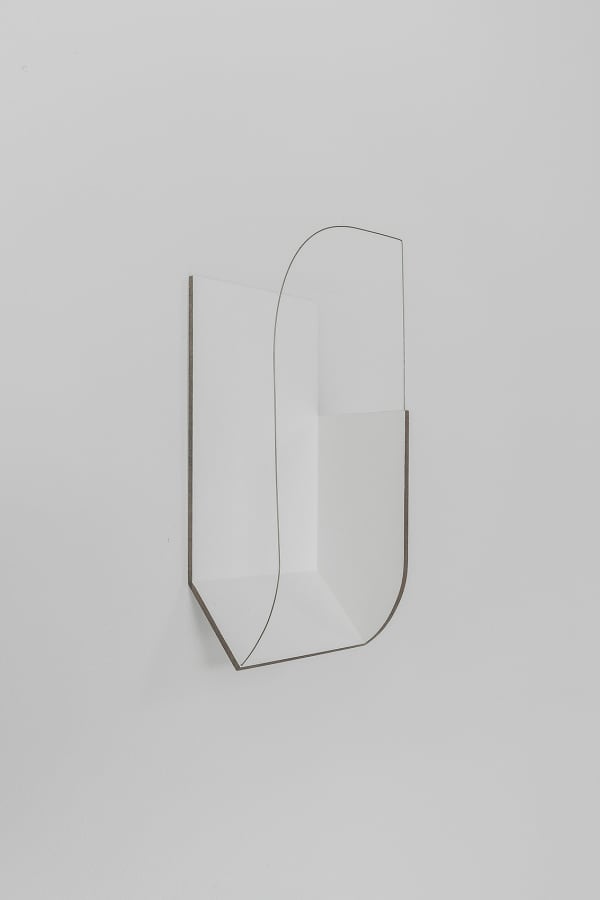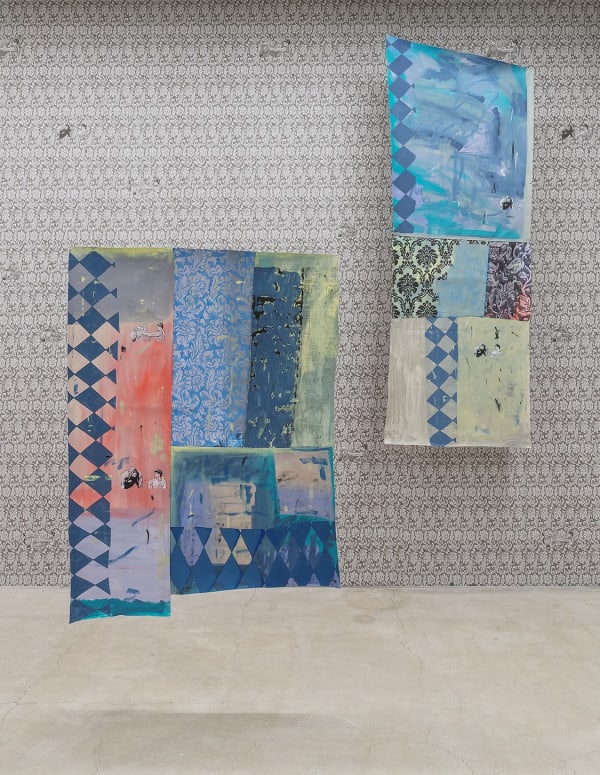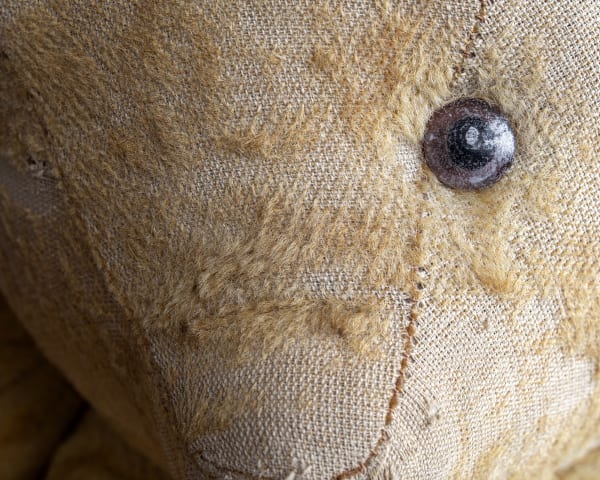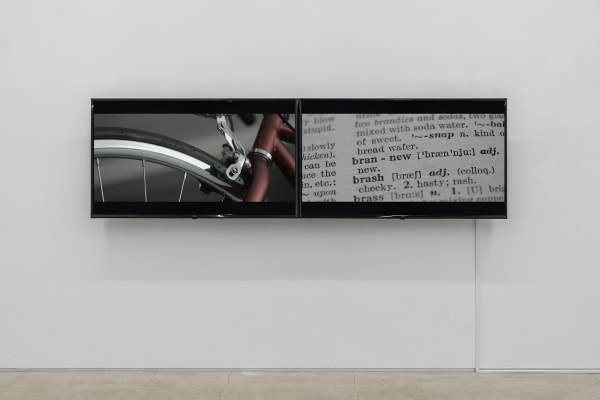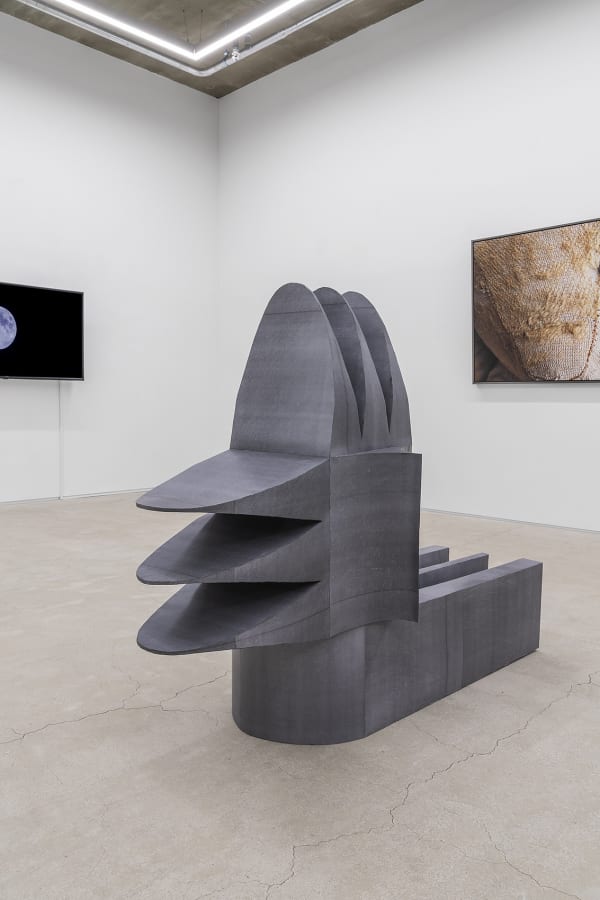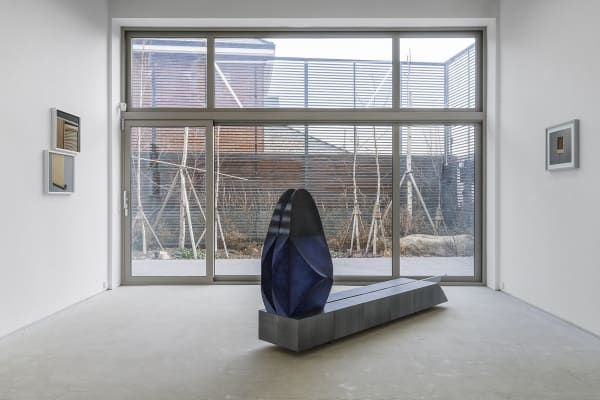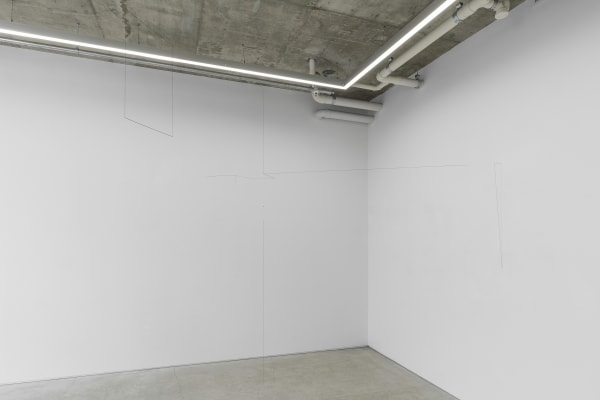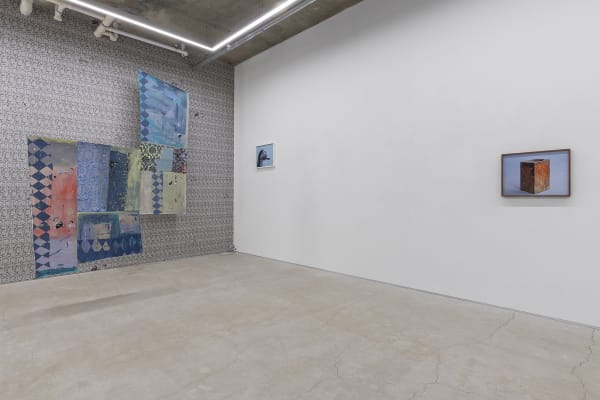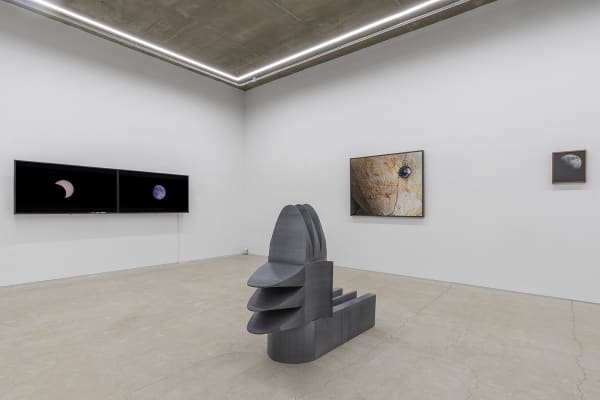스나크: 붙잡는 순간 사라지는 것들 The Snark: Suddenly Vanishing Away: 오종, 우정수, 전명은, 표민홍, 황수연 Jong Oh, Jeongsu Woo, Eun Chun, Minhong Pyo, Sueyon Hwang
전시 《스나크: 붙잡는 순간 사라지는 것들》은 루이스 캐럴(Lewis Carroll, 1832-1898)의 ‘넌센스 문학’이라 불리는 여덟 편으로 구성된 서사시 『스나크 사냥: 여덟 편의 사투』(1876)에서 ‘스나크’[2]의 존재를 반추하는 작업들을 선보인다. 서로 다른 직업의 인물들이 함께 항해하면서 실체가 불분명한 환상의 동물 스나크를 잡고자 하는 모험담은 스나크를 각자의 방식으로 품고 있는 불안과 두려움에 대한 대상으로 상상하면서 사냥하는 단편이다. 서사시에서 스나크는 허구 혹은 부재의 존재인 동시에 다수의 인물들이 표현하는 단어들로 의인화되고 불안에 대한 발화의 주체로 등장한다. 낯선 존재이자 유동적이고 가변적인 정체성, 부재한 정체성으로 묘사된 스나크는 현실에 존재하지 않는 대상으로 공통의 목표물인 반면, 내적인 욕망과 공허 안에서 만들어낸 또 하나의 불안에 대한 허구로 작동한다.
본 전시는 복수의 형태와 의미로 위치하는 스나크와 같은 존재와 상황을 분절된 서사시를 빌어 회화, 조각, 사진, 영상 등 각각의 매체를 다루는 다섯 명의 작가를 통해 각자가 마주하는 불안을 대처하는 방법을 모색한다. 참여작가 오종, 우정수, 전명은, 표민홍, 황수연은 서사시에 나타나는 필사적인 사투와 유희, 텍스트 이면에 내재된 상상의 의미를 더듬어 가면서 각자의 작업을 통해 시각적 환상성에 주목한다. 작가 다섯이 환상성을 다루는 것은 보이지 않는 것(un-seen)을 보이는 것으로 만드는 것과 말해질 수 없는 것(un-said)을 표현하는 것과 같아, 대상이 구체적으로 발화되기 전의 언어들이 잠재적인 상태로 존재하는 텍스트의 형식을 빌어 작품 안에 내재된 각자의 언어를 끌어내는데 있다.
잠재적인 작가의 언어들이 담화를 만들기 위해 서로 자신의 상상력을 정당화하는 논리는 기존 의미 논리를 벗어난 허튼 논리가 되기도 한다. 이러한 모순은 불안이 의미하는 것과 넌센스의 구분으로 언어를 바라보는 시선, 언어를 통해 이미지를 구축하는 시선, 불안이라는 대상에 대한 인식의 틀과 관계된다. 작가 다섯의 작품이 놓인 공간은 보이지 않는 불안과 두려움이 가시적이고 감각적으로 지각될 수 있도록 제시됨으로써 현실과 분리될 수 없는 현실의 이면에 대해 이야기한다. 나아가, 다섯의 언어는 의인화되고 발화의 주체로 등장하는 스나크를 고스란히 재현하는 역할에 국한하지 않고, 언어 자신 안에 있는 감각적 영역들을 확장해 각각의 작업들 사이에 관계가 역전되는 등 대상의 유동적이고 가변적인, 부재한 정체성을 대척점에 두어 줄다리기를 하는 것과 같다.
오종은 서사시에서 등장하는 빈 지도(empty map)의 형식과 개념을 작업의 출발점으로 삼는다. 시에서 사각형 모양을 갖춘 지도는 사각형 가장자리에 무작위의 장소들에 대한 기호만 명시되어 있어 장소를 찾아 나서기 위해 연속적인 시간으로 측정하기 어려운 추상 언어와 같다. 완벽히 부재하는 공간을 척도로 삼는 지도의 생김새는 찾고자 하는 대상을 발견해 나간다는 것을 은유하면서, 동시에 탐험을 나서는 이들에게 하나의 통로이기도 하다. 대상을 향한 두려움의 태도와 실체를 찾아나서는 역할로서 <Room Drawing (axis) #1>(2020)은 모서리에서부터 축이 되어 뻗어 나간다. 비어 있는 곳을 바라보기보다 바깥 혹은 내부에 있는 곳일지도 모르는 공간을 구축해가는 그는 갈등과 불안의 물리적인 장소이자 개념적인 구조체들을 공간 곳곳에서 예민하게 그려나간다.
우정수의 <스나크(The Snark)>(2020) 연작은 패브릭 조각들을 여러 단편들로 구성된 서사시의 익살스러운 상황을 참조하여 캔버스 화면 밖의 탐구를 ‘극’으로 접근하려는 태도를 취한다. 이러한 태도는 긴 시간 고군분투했던 사적인 고충을 분출해 조각난 에피소드를 해학적으로 풀어내는 연출된 회화적 풍경에 가깝다. 한 시대의 장식과 위선을 보여주는 클래식 패턴과 도상은 단편적으로 이야기의 구조에 대한 연계성이 부재함으로써, 도상-패턴-붓질이 주고받는 대화에 단절과 틈이 되려 감각적 효과를 만들어낸다. 과거에 사용한 소재들을 캔버스 위에 복기하는 행위는 흑백의 월페이퍼 형식으로 재해석하거나 캔버스 위에 새로 붓질한 후에 여러 형태로 오려서 콜라주함으로써, 문학 속 ‘넌센스’가 생성해내는 다양한 감각의 충돌과 상충, 갈등과 긴장이 연계되어 작가의 낯선 정체성을 연출한다.
전명은의 <배클램트(Beklemmt)>(2020)는 베토벤의 현악에서 카바티나(cavatina)의 중반부 악절에 남긴 지시어 ‘배클램트’의 음악적 방향성과 성격의 완전한 고독감에 대해 기록한다. ‘답답하게, 압박하며, 숨이 막힐 듯’이 감정에 지지 않고 길게 끌고 가는 배클램트의 지시어는 음악이 닿는 마지막 곳이 사람의 마음이라는 태도에 기인한다. 피사체에 담긴 오랜 시간 수집한 낡은 골동품들은 이름 없는 곳에서부터 전개되었던 누군가의 흔적과 여러 차원을 이동한 사적인 역사의 뿌리를 관찰하고 기록된다. 전명은의 애정하는 사물 본연에서 포착한 촉각적인 감각과 힘의 방향은 작가 자신으로 돌아와 부여잡고 있는 작은 서사의 조각들을 찾아가는 가장 외로운 시간일 것이다.
표민홍은 자전적인 사건과 감정의 기억들을 회상하면서 불안의 요소를 끄집어 관찰자가 된다. 논-내러티브 영상 <낮밤(day for night)>(2020)은 일곱 살 소년의 불안과 자전거 도둑의 존재에 대한 부재와 시간의 변화를 세 개의 챕터로 기록한다. 새 자전거를 훔쳐간 도둑의 얼굴을 모른 채, 도둑의 모습에 대한 소문만 무성했던 날들을 기다리면서 어느 날 다시 제자리로 돌아온 자전거에 대한 소년의 기억은 불안과 부재, 그리고 기다림에 대한 시간의 방향과 연속성에 대해 섬세하게 그린다. 이와 더불어, 텍스트 작업은 불안의 근원과 마주하지 못했던 혹은 마주하지 않았던 내면의 감각들에 대한 기록을 문학의 ‘혼성 텍스트(portmanteau text)’ 형식을 따라 분절된 언어들로 문장을 만들고, 투명하고 연약한 재료를 이용해 아슬아슬하게 공간을 파고든다. 모서리의 귀퉁이와 창문 등 쉬이 지나칠 수 있는 곳에 있는 작가의 ‘말’들은 잡힐 듯 말 듯 견고함과 무관하게 소리없이 녹을 것처럼 그곳에 있다.
황수연의 종이 조각은 상상하는 형태의 완벽한 접합과 연속되는 관계에 기인하여 만들고자 하는 형태와 움직이는 모양이 갈등하면서 생기는 지점들을 다양한 모습으로 변이한다. 작가는 생태계에서 종(種)의 지위를 나타내는 용어 ‘니치(niche)’에 주목하면서, 종들의 공동체 속에서 차지하는 위치와 살아가는 관념과 감각에서 형태들을 상상해낸다. 종이 도면들을 이용해 질서를 찾고 새로운 형태가 만들어지는 과정은 종이접기와 펼치기를 오가며 완성된 작업을 재료로 재활용하고, 표면 위에 에어브러쉬를 분사하는 등 다른 종으로 탄생한다. <P.or>(2020), <줄무늬, 긴(Stipes, long)>(2020)과 <3(Three)>(2020)은 기존 작업을 다른 정체성을 지닌 존재로 전환하고, 숫자에 대한 연속되는 관계를 통해 관념적인 형태의 예민함을 보여준다. 이들은 머리 부분을 지탱해주는 낮게 놓인 감각의 종이 지지체를 아슬아슬한 지점에 둠으로써 고양되었던 공포의 생김새를 유희적으로 풀어낸다.
《스나크: 붙잡는 순간 사라지는 것들》에서 다섯 명이 주고 받는 예민한 몸짓은 각자가 마주하는 불안과 공포의 존재를 그리면서 공간 간의 거리와 시간의 간격 사이에 삶에 공통된 감각을 발견해내는데 있다. 대부분의 가장 보통의 존재들이 침범 당하지 않는 영역은 각자의 내면이라는 점에서 잡히지 않는 무형의 존재를 구가하는 것이라 상정했을 때, 이는 역설적으로 고정된 정체성에서 벗어나 자아와 씨름해야 하는 일종에 인간의 숙명을 받아들이는 희극과 비극 그 중간 어디쯤에 있지 않을까? 나와 타인 사이에 닿을 수 없는 관계의 단절로 동반되는 불안은 자신 안에 있는 수많은 자아들을 찾기 위한 것에 기인하며, 자신의 정체성을 고정시키는 대신 그 사이에 발견되는 틈을 비집고 보기 위해 의도적으로 이 존재들에게 문을 두드리며 관찰하는 것과 같다. 그렇게 붙잡고자 하는 불안이라는 존재는 잡힌 듯한 순간 홀연히 사라지며 또 다시 우리 앞에 나타난다.
[1] 루이스 캐럴, 『루이스 캐럴 – 운율? 그리고 의미? / 헝클어진 이야기』, 유나영 옮김, 워크룸 프레스, 2007, p. 218.
“The, silence. Some fancied they heard in the air. A weary and wandering sigh. That sounded like “– jum!” but the others declare. It was only a breeze that went by.” Lewis Carroll, The Hunting of the Snark: An Agony, in Eight Fits, Issue 26, Macmillan and Company, 1876, p. 81.
[2] 스나크(Snark)는 달팽이(snail), 상어(shark)의 합성어 혹은 뱀(snake), 짖다(bark)의 합성어로 이야기한다.
The Snark: Suddenly Vanishing Away
Curated by Sungah Serena Choo
Eun Chun, Sueyon Hwang, Jong Oh, Minhong Pyo, Jeongsu Woo
The exhibition The Snark: Suddenly Vanishing Away features artwork that reflects on the “Snark,” a figure in the eight-part epic nonsense literature poem The Hunting of the Snark: An Agony in Eight Fits (1876) by Lewis Carroll (1832–1898). It is the adventure tale of people from different professions who sail off together to capture the Snark, an imaginary animal of ambiguous nature. As they hunt the beast, they each imagine the object of their fear and anxiety as they perceive it. The Snark is thus presented as an unfamiliar being with both a fluid and mutable identity and no identity at all; not present in reality, it is the common target of the characters who appear, and at the same time it operates as another fearsome fiction produced from within inner desire and emptiness. What the exhibition focuses upon is the Snark as a presence that abandons all logic and order, stitched together against the backdrop of the object’s dark shadow. It speaks to the objects and situations that potentially threaten us at any moment in our actual lives. It may represent an allegory for our attitude in facing loneliness, crisis, frustration, and silence in our most private moments.
Drawing on the format of the fragmented narrative of hunting “Snarks” – objects/situations with multiple forms and meanings – the exhibition brings together five artists working in different media (painting, sculpture, photography, and video), exploring the ways in which each of them faces their fears. Alternating between reality and an imaginary world that only they can approach, they follow the emotional path described by the characters. The artists – Jong Oh, Jeongsu Woo, Eun Chun, Minhong Pyo, and Sueyon Hwang – focus on visual fantasy through their work, feeling about for the inherent imaginary meaning underneath the epic’s suitable scenario, realistic depictions, and text. With this exhibition, the approach to fantasy is akin to making the unseen visible and expressing the unsaid. Drawing on the motif of the Snark – a form of text where language exists in a potential state prior to the subject being concretely expressed – the exhibition draws out the individual language intrinsic to each artist’s work.
The five artists’ languages are like the stages where nonsense languages come together for a debate, revealing different levels of potentiality as they deconstruct established systems of meaning and conventional frameworks of linguistic perception. The nonsense logic that the exhibition draws upon is more than just a fictional device providing a sense of plausibility for the viewer; it illustrates the identity and nature of “nonsense” itself. The space in which the five artists’ works are situated is thus presented in such a way that unseen fears and anxieties can be perceived at a visual and sensory level – thus addressing aspects of reality that cannot be separated from reality. Moreover, the five languages are not confined to the role of representing a personified Snark that appears as the subject of utterances; they broaden the sensory domains that exist within language itself, reversing the relationships that exist among the individual works. It is like a tug-of-war where the object’s fluid and changeable identity is situated as an antipode.
The nimble movements exchanged among the five artists in The Snark: Suddenly Vanishing Away involving represent the objects of fear and anxiety that each of them confronts, while discovering the common meaning of life in the spatial distances and temporal divides. The last scene of the poem shows a character disappearing the moment he believes he has captured the Snark. The presences that cause us anxiety and fear may ultimately lie within ourselves – objects without reality. An ordinary being’s interior represents the realm where they are least infringed upon, and when we consider it to be something that goes beyond survival to rejoice in intangible things beyond our grasp, it seems ironically to occupy a space midway between comedy and tragedy as we accept a kind of human destiny of having to leave behind fixed identity to wrestle with the self. In particular, the anxiety attendant on an unbridgeable break in relations between ourselves and others stems from an attempt to find the many “selves” within us, and rather than fixing our identity in place, we deliberately knock on the door of those presences and observe them in order to pry into the cracks we find within. The anxiety that we seek to pin down vanishes suddenly without a trace the moment it seems to enter our grasp, and then appears again to stand before us.
